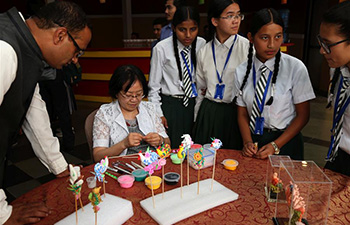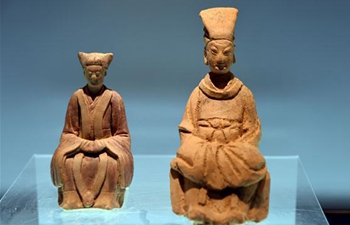SAN FRANCISCO, June 22 (Xinhua) -- A study led by the University of California, San Francisco, indicates that around one in five children with Tourette syndrome, a neurological disorder characterized by involuntary movements and vocalizations, met criteria for autism.
Using a self-reporting test called the Social Responsiveness Scale, a 65-item quantitative measure of autism symptoms that assesses the ability to engage in "emotionally appropriate reciprocal social interactions," researchers tested 535 children and adults with Tourette's for autism.
Among the 294 children tested, 22.8 percent reached the cutoff for autism, versus 8.7 percent of the 241 adults.
In contrast, according to studies cited in the paper published Thursday in the Journal of the American Academy of Child and Adolescent Psychiatry, autism is estimated to affect between 0.3 percent and 2.9 percent of the general population.
By evaluating the study participants' levels of social awareness, social cognition, social communication, social motivation, and restrictive interests and repetitive behavior, the researchers wanted to examine autism symptoms in patients with Tourette's, including those whose diagnosis was coupled with obsessive-compulsive disorder (OCD) or attention deficit hyperactivity disorder (ADHD), conditions that frequently co-occur.
Tourette's, OCD and ADHD have been shown to share common symptoms and genetic relationships in a recent study by the same researchers.
Tourette's affects between one and 10 in 1,000 children, according to the U.S. National Institutes of Health (NIH).
Like autism, it is significantly more prevalent in males. Common tics include repetitive throat clearing, blinking or grimacing. Most people do not require medication to suppress their symptoms, but treatment may be recommended for co-occurring ADHD and OCD.
"Assessing autism symptom patterns in a large Tourette's sample may be helpful in determining whether some of this overlap is due to symptoms found in both disorders, rather than an overlapping etiology," first author Sabrina Darrow, assistant professor in the department of psychiatry at UCSF, was quoted as saying in a news release.
"Our results suggest that although autism diagnoses were higher in individuals with Tourette's, some of the increase may be due to autism-like symptoms, especially repetitive behaviors that are more strongly related to obsessive-compulsive disorder."
The researchers found that the highest scores on the Social Responsiveness Scale, which met autism criteria, were found in participants with Tourette's and either OCD or ADHD, and that 83 percent of those with Tourette's who met the cutoff for autism also met criteria for OCD.
High scores were especially evident in the part of the autism test that measures restrictive interests and repetitive behavior.
An argument against the surprisingly high rates of autism found in this sample was the wide discrepancy between children and adults who met the diagnostic criteria.
Tourette's is usually diagnosed between the ages of three and nine; symptoms most often peak in the early teens and start to abate in the early 20s, with continued improvement in early adulthood.
"Children were more than twice as likely to meet the cutoff than adults, indicating that as tics recede, so do symptoms of autism. In contrast, autism is usually lifelong," Darrow said.
"This suggests that some of the increase may reflect underlying psychiatric impairment rather than being specific for autism," said senior author Carol Mathews, who did the research while professor of psychiatry at UCSF.
"Some of the children in the study probably have autism, others have symptoms that mimic autism, but are not really due to autism. These symptoms are called phenocopies."

















